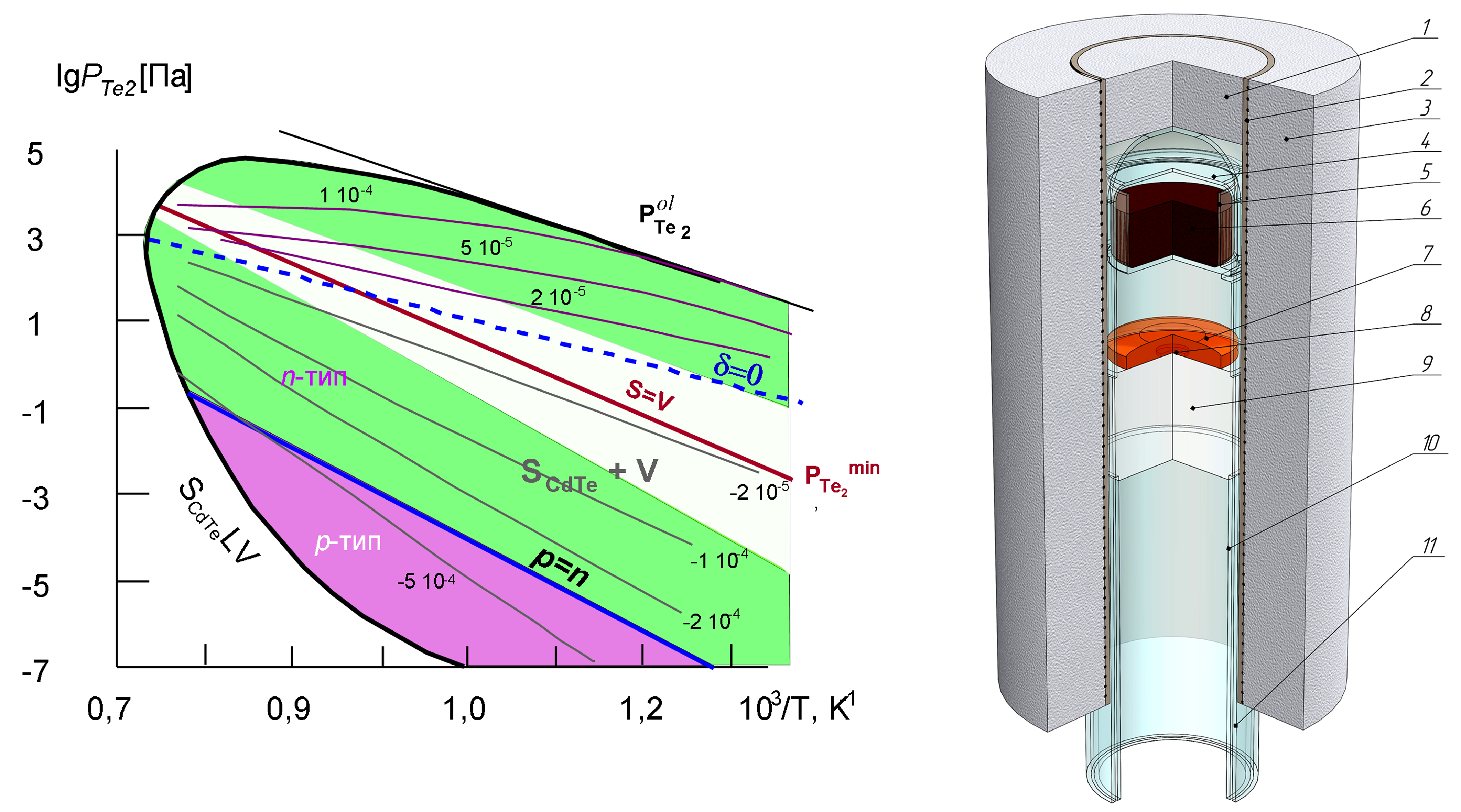| Search for content and authors |
Nonstoichiometry of ZnTe and CdTe vapor grown crystals |
| Igor C. Avetissov 1, Elena Mozhevitina 1, Andrew Khomykov 1, Roman I. Avetisov 1, Albert A. Davydov 2, Vladimir P. Chegnov 2, Olga I. Chegnova 2, Nikolai V. Zhavoronkov 2 |
|
1. D.I.Mendeleyev University of Chemical Technology of Russia (MUCTR), Miusskaya sq. 9, Moscow 125047, Russian Federation |
| Abstract |
Extra pure ZnTe and CdTe single crystals were grown by Markov-Davydov vapor growth method [1] on a sapphire substrate. Crystals were formed at 1150-1350 K temperature range at pressures close to congruent sublimation conditions (Fig.1). 
Fig.1. The scheme of CdTe and ZnTe vapor crystal growth by Markov-Davydov technique. Setup scheme (right) 1- thermo insulating cover, 2- ceramic tube, 3- thermoinsulation, 4- quartz glass reactor, 5- polycrystalline ingot, 6- quartz glass crucible, 7- growing crystal, 8- seed, 9- sapphire piedestal, 10- quartz glass tube, 11- plung for vacuume system connection. PTe2-T projection of Cd-Te (left). Figures on isoconcentration lines shows the excess Te ("-" Cd) concentration at bivariant Ss-CdTeV equilibrium. The white area covers the range of stable single crystal growth conditions. The study of ZnTe and CdTe homogeneity ranges by direct physico-chemical method [2] in the temperature range 750-1365 K added by XRD analysis let us proposed the scheme of 3C-2H polymorphous transition in ZnTe and CdTe compounds. We proposed that polymorphous transition is followed by peritectic reactions at both Te-riched and Zn(Cd)-riched sides (Fig.2,3). Fig.2. Homogenity region of ZnTe with the proposed scheme of 3C-2H polymorphous transformation For the first time it was demonstrated that homogeneity region of undoped ZnTe included stiochiometric composition. Analysis of luminescent and electrical properties of the as-growm and heat treated at different partial pressures single crystals was conducted.
Fig.3. Homogenitty region of CdTe with the proposed scheme of 3C-2H polymorphous transformation The research was supported by Ministry of Education and Science of Russia by grant N 16.513.11.3144 1. A.A.Davydov, et.al. (1992) Neorg. Mater. (in Russian), 28, 42 |
| Legal notice |
|
| Related papers |
Presentation: Oral at 17th International Conference on Crystal Growth and Epitaxy - ICCGE-17, Topical Session 4, by Igor C. AvetissovSee On-line Journal of 17th International Conference on Crystal Growth and Epitaxy - ICCGE-17 Submitted: 2013-03-10 21:04 Revised: 2013-03-22 22:16 |